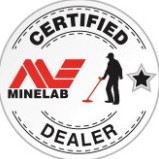My Son Is Convinced This Is A Meteorite:
-
Similar Content
-
Rye Patch Nevada Rare Specimen Gold, Crystals, Field Training & Photos 1 2
By Gerry in Idaho,
- gold found
- nevada
- (and 1 more)
- 17 replies
- 1,448 views
-
- 14 replies
- 1,083 views
-
- 8 replies
- 1,254 views
-
- 15 replies
- 2,031 views
-
- 20 replies
- 3,626 views
-
- 3 replies
- 902 views
-
-








Recommended Posts
Create an account or sign in to comment
You need to be a member in order to leave a comment
Create an account
Sign up for a new account in our community. It's easy!
Register a new accountSign in
Already have an account? Sign in here.
Sign In Now